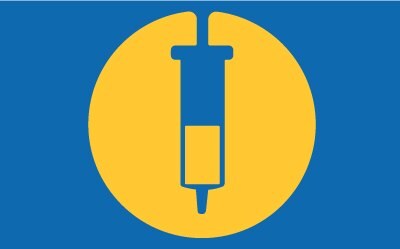Prepared for PFAS Testing
PFAS analysis requires accuracy at every step. Be confident in your results with trusted products and services for your entire workflow.
Perfluoroalkyl substances (PFAS) are a group of human-made Organofluorine compounds, a class of highly fluorinated substances.
PFAS compounds are also commonly known as “forever chemicals” which means they do not break down in the environment like other chemicals. This persistence can result in the concentration of these compounds growing to levels that are unsafe for human exposure with possible negative health effects such as: low infant birth weights, immune system dysfunction, cancer, and thyroid hormone disruption.
As part of our commitment to making a safer world, we have focused on developing environmental monitoring tools to quantify PFAS compounds more accurately. Our solutions empower researchers trying to better understand the effects of PFAS, as well as regulators and labs focused on providing ongoing exposure testing services.
Environmental testing and PFAS
Perfluoroalkyl substances have been used for decades across many sectors and in countless products because of the utility they offered. This widespread usage has resulted in PFAS compounds now being found in watersheds, soils and in some instances the compounds can be found in the air we breathe.
Because of its ubiquitous presence and the growing understanding of the adverse health effects of exposure; nations around the world are starting to implement tighter regulations to limit future use of PFAS compounds, measure the full scope of the problem and undertake the monumental task of remediation.
Accurate measurement of PFAS compounds in diverse matrices will be an integral part of all of these efforts.
Clinical testing and PFAS
Most people have been exposed to PFAS and there are increasing concerns due to their extreme persistence, its bioaccumulation and its links to adverse human health effects. Multiple studies have investigated these concerns and organizations such as National Health and Nutrition Examination Survey (NHANES) has measured blood PFAS in the U.S. population since 1999. In Europe PFAS is one of the 18 HBM4EU priority substance groups investigated by HBM4EU to better understand exposure and effects on health. Possible health impacts include:
- Increased risk of kidney or testicular cancer
- Decreased vaccine response in children
- Increased risk of high blood pressure or pre-eclampsia in pregnant women
- Small decreases in infant birth weights
- Increased cholesterol levels
- Changes in liver enzymes
Human monitoring has shown a decline in PFOS and PFOA in the US, as these products have been phased out, but concerns remain about exposure to the newer replacement PFAS.
PFAS testing for food and beverages
Over recent years growing consumer awareness and concern of potential PFAS contamination levels in the general food supply have led to increased activity of identification and quantification of these chemicals in food products and packaging that are sources of exposure to consumers. Public health advocates are urging the food industry to act sooner rather than later due to health risk concerns. Along these same lines there are many in the food industry pledging to phase out the use of PFAS in packaging, food processing, food contact materials, and manufacturing. The general food supply is a complex dynamic of inputs and outputs that are all interconnected not just domestically but globally in today's world. PFAS is a regulated chemical in the food industry known to be used for its non-stick and grease, oil, and water-resistant properties it yields. PFAS chemicals are known to bioaccumulate and at certain thresholds adverse health effects can occur. The ways PFAS chemicals enter the food supply are:
- Agri Food (crop and livestock bioaccumulation from contaminated soil and water)
- Food Packaging (extractables and leachables directly into the product)
- Food Contact (manufacturing and processing equipment, cookware)
- Food and Beverage Waste-streams (contaminated waste accumulating in landfills)
Testing of PFAS chemical contaminants will not simply disappear with phasing out of their use in the food industry. The implications of their past use will be cause for consumer health concerns for the foreseeable future of these “forever chemicals”.
Cannabis and PFAS testing
Though cannabis and hemp can be grown using a variety of techniques, outdoor field-based cultivation is the most common for hemp due to relative cost and scale of operations. However, hemp plants have strong phytoremediation properties, with capabilities to extract heavy metals and other toxic contaminants from soil. Due to these properties, industrial hemp has historically been used for cleanup of radioactive isotopes, including in the aftermath of the 1986 Chernobyl nuclear meltdown. Recent studies suggest that planting fibrous hemp at polluted sites is also a viable means for PFAS removal. It was shown that hemp plants offer superior removal for PFAS in contaminated groundwater out of many plant varietals explored1.
When cannabis and hemp is grown outdoors, particularly in regions where forest fires are common, PFAS can potentially be introduced to the plants through use of flame-retardants, or through contaminated groundwater. Therefore, there is emerging interest in analyzing cannabis and hemp plants and their derived products for PFAS to ensure safety of final products for end-consumers.
PFAS in Cosmetics
PFAS in cosmetics may pose a risk to human health through direct and indirect exposure, as well as a risk to ecosystem health throughout the lifecycle of these products. In a recent study2 of 231 commonly used cosmetics, researchers at the University of Notre Dame detected high levels of fluorine (an indicator of PFAS) in 63% of foundations, 55% of lip products, and 47% of mascaras. In the US, the FDA is monitoring this topic and a bill has been introduced recently, “No PFAS in Cosmetics Act”. California passed a toxic-free cosmetics act, which bans PFAS from cosmetics and personal care products sold or made in the state. The European Commission regulation on cosmetic products is going to be revised by the end of 2022 and actions on PFAS are expected.
PFAS TESTING WORKFLOW
Sample Collection

Sample Preparation

Standardization and Calibration

Analysis

Reference
1. Turner BD, Sloan SW, Currell GR. Novel remediation of per- and polyfluoroalkyl substances (PFASs) from contaminated groundwater using Cannabis Sativa L. (hemp) protein powder. Chemosphere. 2019;229:22-31. doi:10.1016/j.chemosphere.2019.04.139
https://pubmed.ncbi.nlm.nih.gov/31071516/
2. Whitehead, HD, et al. Fluorinated Compounds in North American Cosmetics. Environ. Sci. Technol. Lett. 2021;8:538-544.
https://pubs.acs.org/doi/pdf/10.1021/acs.estlett.1c00240
To continue reading please sign in or create an account.
Don't Have An Account?